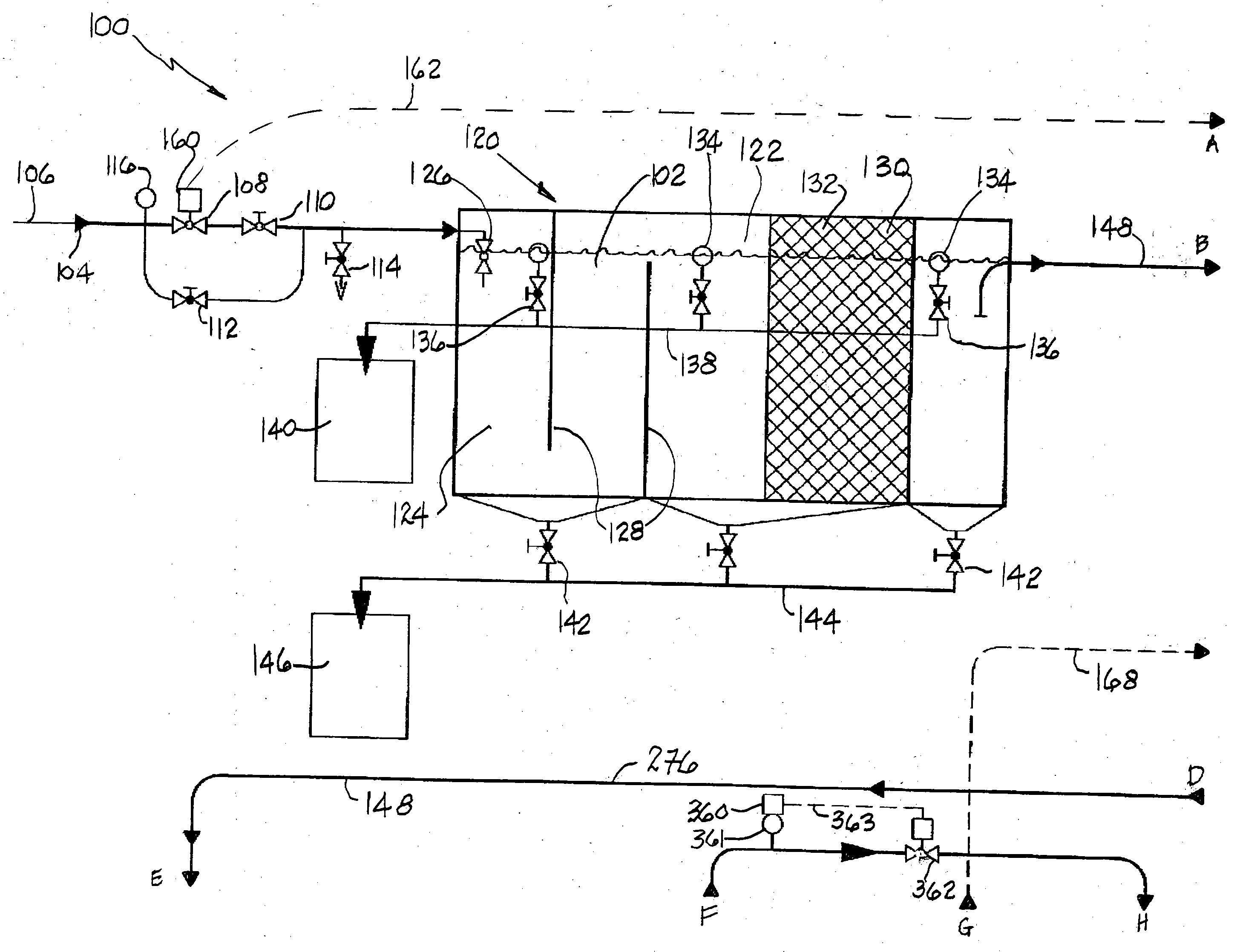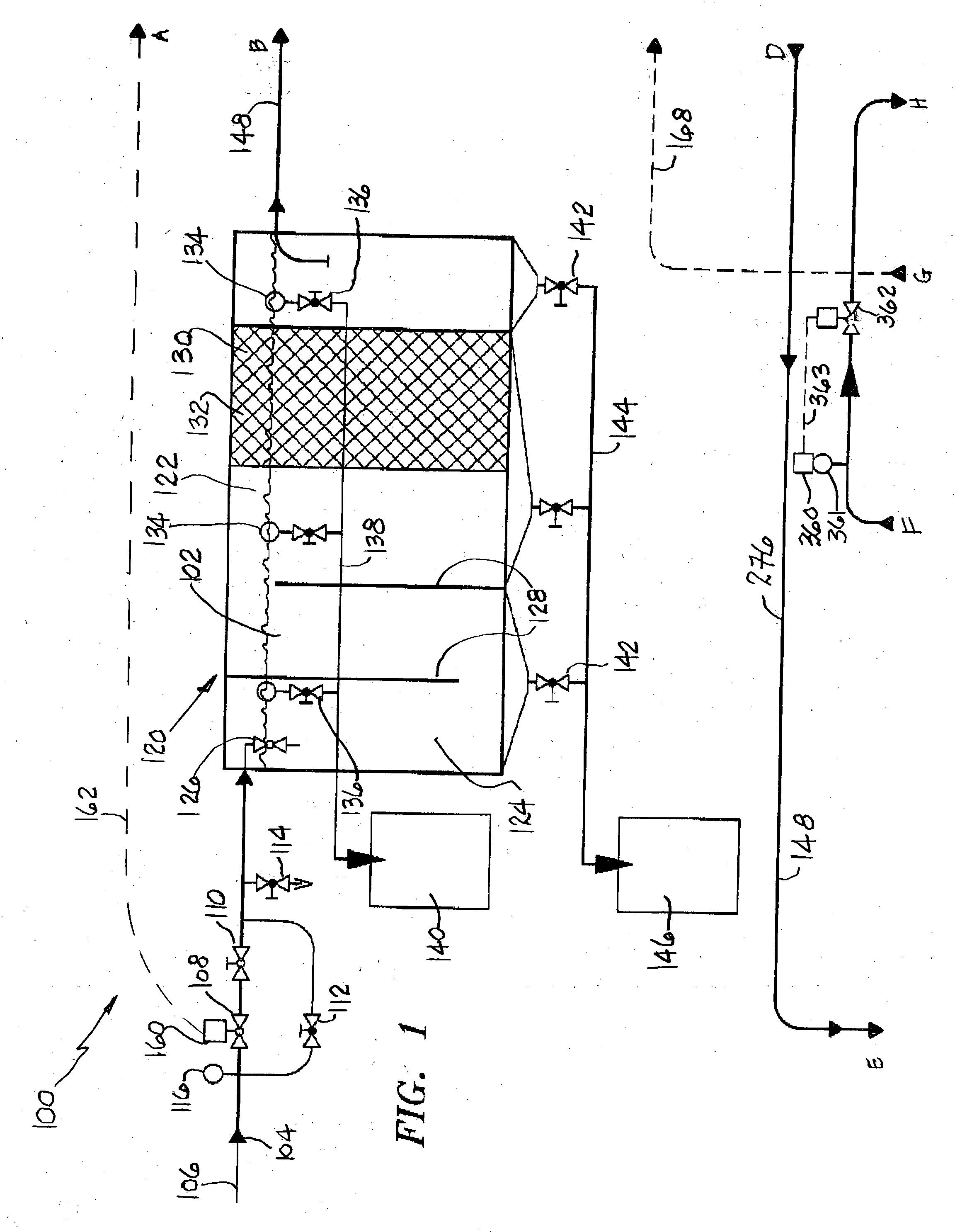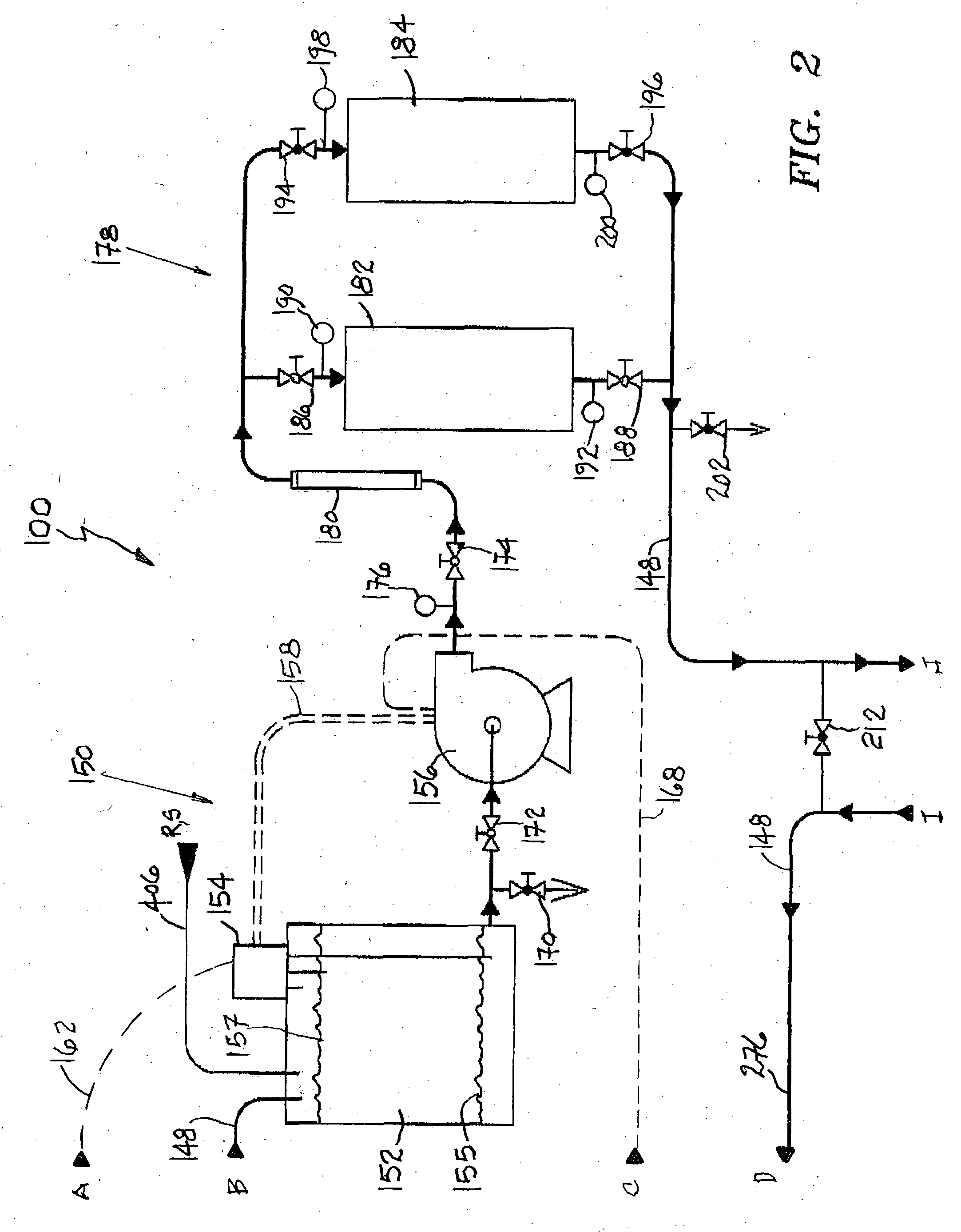Multi-phase separation system
a multi-phase separation and separation system technology, applied in the direction of sedimentation settling tanks, settling tank feed/discharge, chemical/physical processes, etc., can solve the problems of volatile organic compounds, serious spillage problems, and contamination of ground water
- Summary
- Abstract
- Description
- Claims
- Application Information
AI Technical Summary
Benefits of technology
Problems solved by technology
Method used
Image
Examples
Embodiment Construction
[0026] The present invention is a multi-phase separation system 100 typically utilized to remove chemical fuel additives such as Methyl Tertiary-Butyl Ether (hereinafter MTBE) and Volatile Organic Compounds (hereinafter VOC's) from fluids, such as groundwater 102 from a contaminated water source indicated by an arrow 104 in FIG. 1. The multi-phase separation system 100 can be used to decontaminate groundwater 102 after spillage or leakage of processed gasoline containing Methyl Tertiary-Butyl Ether (MTBE) from fuel storage tanks (not shown) and Volatile Organic Compounds (VOC's) also utilized in gasoline and in various industrial environments such as in the steel industry. The multi-phase separation system is designed to receive contaminated fluid such as ground water 102 and to discharge liquid meeting the Environmental Protection Agency (EPA) water quality requirements and thus suitable for human consumption and usage.
[0027] In general, the ground water 102 becomes contaminated b...
PUM
| Property | Measurement | Unit |
|---|---|---|
| Diameter | aaaaa | aaaaa |
| Temperature | aaaaa | aaaaa |
| Flow rate | aaaaa | aaaaa |
Abstract
Description
Claims
Application Information
 Login to View More
Login to View More - R&D
- Intellectual Property
- Life Sciences
- Materials
- Tech Scout
- Unparalleled Data Quality
- Higher Quality Content
- 60% Fewer Hallucinations
Browse by: Latest US Patents, China's latest patents, Technical Efficacy Thesaurus, Application Domain, Technology Topic, Popular Technical Reports.
© 2025 PatSnap. All rights reserved.Legal|Privacy policy|Modern Slavery Act Transparency Statement|Sitemap|About US| Contact US: help@patsnap.com



